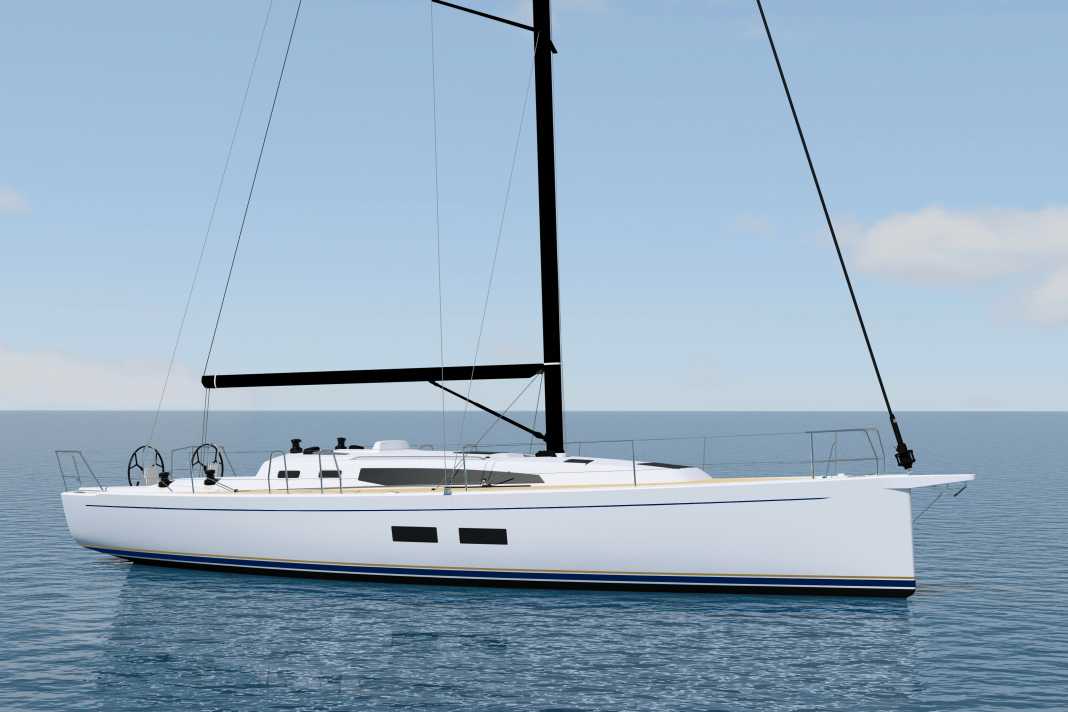





For a comparatively small series yacht builder, J/Boats has the luxury of two model series, both in the sporty segment. On the one hand, there are the regatta-oriented boats such as the J/70, 80, 99 and 111, and on the other hand, there is the so-called Elegance line, which is currently being reorganised. It ranges from the J/112 E to the J/40, which has now been launched, and the J/45, which has been at the head of the fleet since 2021.
It doesn't take much imagination to predict that the entire performance cruiser series will be relaunched with the latest première. It is not yet clear when the smallest model in the Elegance range will be replaced, especially as the J/112 E is still selling well. However, as the only representative of the old line, it is now somewhat out of the ordinary, and not just in terms of nomenclature.
In fact, the experienced boat builders from Les Sables-d'Olonne have made a new commitment with the J/40. It borrows so much in terms of concept and design from the flagship that it is only a matter of time before the entry-level model, which is now one of the absolute exotics with centralised wheel steering, is also renewed.
The J/40 is characterised by modern design features, but still has more classic hull lines
As has long been customary, the J/40 has two steering columns in the cockpit. J/Boat's legendary good cockpit ergonomics have been retained. Three pairs of winches with generously dimensioned drums are just as standard as the deflection of all important trim lines to both sides: The mainsheet, traveller and backstay adjusters are routed to the helm stations, where they are within direct reach of the helmsman or tactician.
The hull design created by Alan Johnstone also emphasises classic virtues: The boat has grown in length, waterline and width compared to the J/122 from 2008. At 12.47 metres overall, the J/40 is a good one foot longer than its predecessor and now measures 3.86 metres in width (J/122: 3.63 m). However, it continues to buck the trend towards a maximally wide rear end. Instead, the end is visibly tapered, which, together with the comparatively flat freeboard and the pronounced deck step, gives her an elegant and dynamic overall appearance.
The same applies to the appendages: typical J! Only one central, but deep rudder with a high aspect ratio, and an L-keel instead of the torpedo keel that is otherwise predominantly used, the surface of which is "shaped" right from the shipyard. It is as true to shape as possible and has a fine profile instead of the rough fore and aft edges and orange peel effect usually found in large-scale production. An important performance plus.
A further, not immediately obvious added value lies in the construction method. The J/40 is produced as an elaborate GRP sandwich using the infusion process, which is not limited to the hull and deck, but also includes bulkheads and strongback, which ensures a precisely defined resin content in the laminate and therefore optimum strength in relation to weight.
The fact that the twelve-metre yacht is relatively heavy at 7.7 tonnes unladen weight is surprising in this context. The predecessor displaced 900 kilograms less. However, J/Boats has not yet provided any information on the proportion of ballast, which is why it is too early to categorise it. Compared to its smaller competitors in terms of hull length, such as the X 4.0, Dehler 38 and Grand Soleil 40 Performance, it is certainly not out of line. Only the Italia 11.98, with an unladen weight of 6.4 tonnes, is significantly lower.
Plenty of engine power, contemporary comfort
But the J/40 also offers a lot more in terms of expansion and comfort than was previously typical for a J. This is demonstrated by the engine, which is not really a core criterion when buying a performance cruiser that is supposed to run at almost wind speed from 2 Beaufort with Code Zero - at least that's what shipyard boss Didier Le Moal promises. But just in case, there is a Volvo Penta diesel that delivers a whopping 50 hp, where the competition leaves it at 30 or 40 hp.
However, the J/4o has gained the most in comparison to the J/122 below deck. Although it does not quite achieve the feel-good factor and visual quality of an X 4.0, it offers plenty of volume, light, storage space and functionality. In many ways, it is so reminiscent of the J/45 that it could even become a kind of internal competitor.
Didier Le Moal from J Composites categorises it as follows: "This boat will excel in both inshore regattas and offshore events, while also proving itself on family cruises. The J/40 is the essence of the expertise that allows us to offer the best of both worlds."
In a few days, YACHT will be testing whether she lives up to this claim exclusively on board construction number one in the Bay of Biscay. The first photos and hopefully further data and prices will follow shortly here on yacht.de. Click on this link to go to the official J/40 website!

